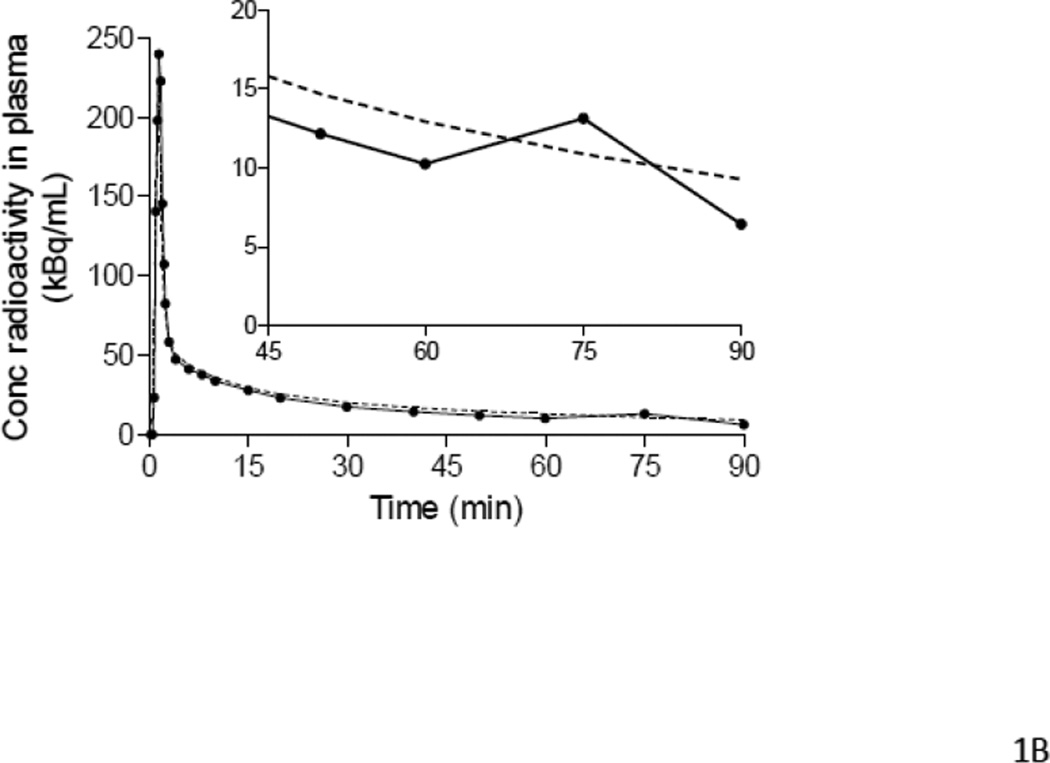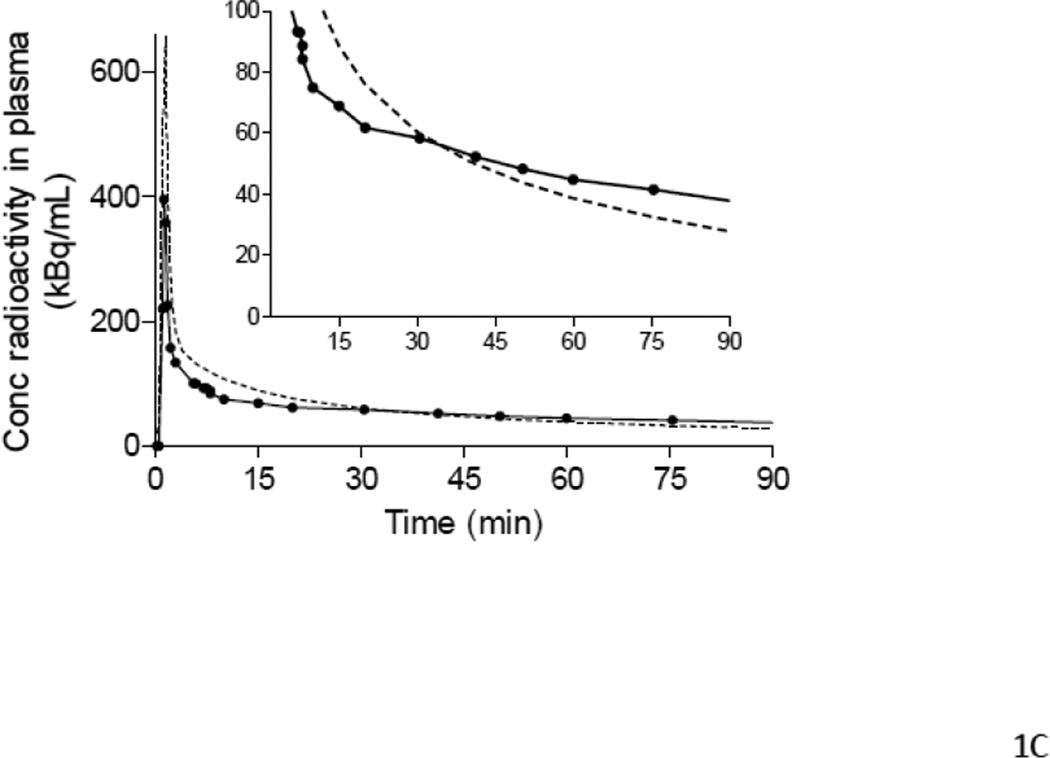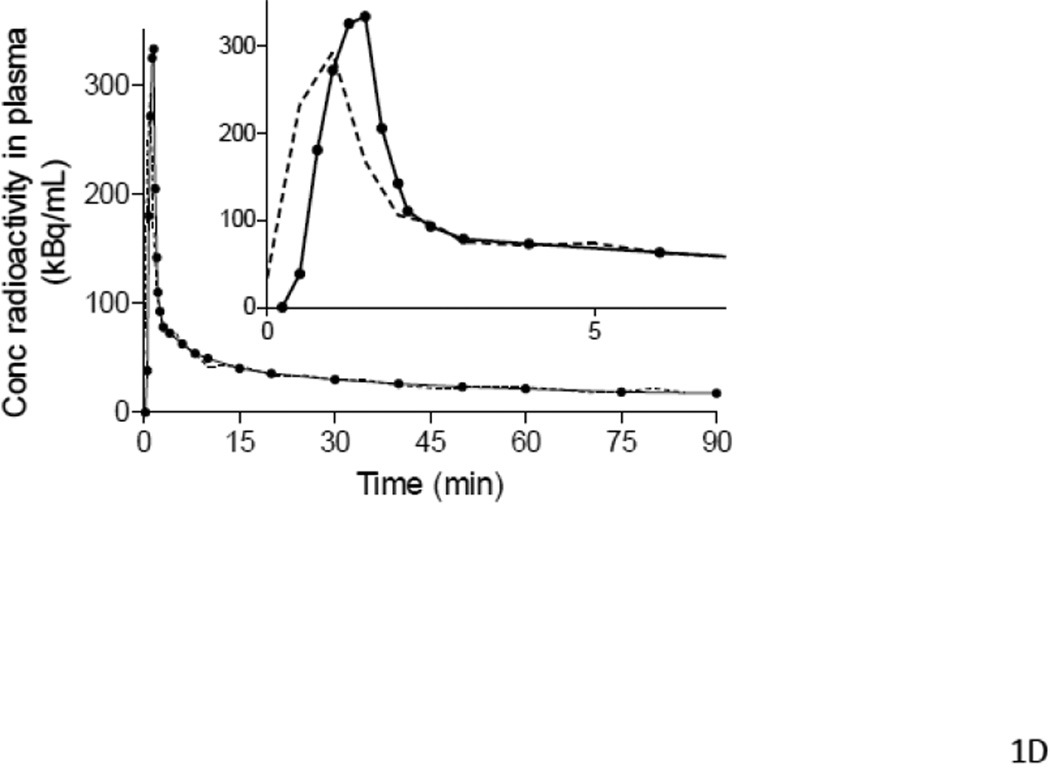Figure 1.
Examples of input functions estimated with PBIF (A, B, C) and IDIF (D), plotted against the reference arterial input functions. PBIF and IDIF are shown with a dashed line. The arterial input functions are shown with solid line, where (●) represents individual measurements. (A) PBIF of a representative subject. In this example, the curve was positioned to overlie two plasma concentrations of [11C](R)-rolipram measured at 10 and 75 minutes. (B) One of the three outliers with a distribution volume (VT) estimation error >20%. The arterial input function has an apparent “bump” at 75 minutes, which is highlighted in the insert. This “bump” may have been caused by an error in the measurement of that particular blood sample. Since only two blood samples were used to scale PBIF, the bump in the arterial input function led to an overestimation of the PBIF and an underestimation of VT (−20.2%). In the other two outliers (Table 5), the curves had a “dip” at 75 minutes. Thus, PBIF was underestimated and VT was overestimated (+22.0% and +24.0%). When PBIF was scaled with three blood samples (10, 40 and 75 minutes), the errors became +14.2%, −13.7%, and −8.0%, respectively. (C) One of the most “extreme” cases of mismatch between the PBIF and the individual input function. The arterial input function of this subject had a particularly “flat” shape to the tail of the curve. This flatness of the arterial curve and its disparity compared to PBIF are more visible in the insert. In addition, PBIF overestimated the peak. Despite these errors in early and late portions of the input curves, PBIF overestimated total AUC by 10% and VT by only 7%. (D) Representative curves of IDIF (----) and arterial input function (●) from a single subject. In contrast to PBIF, IDIF always matched the tail of the curve well, but often matched the peak poorly.




